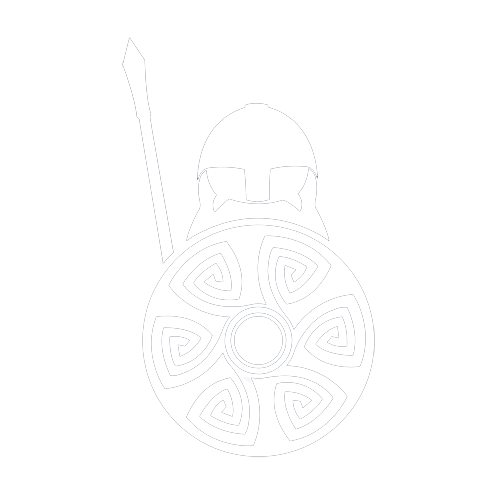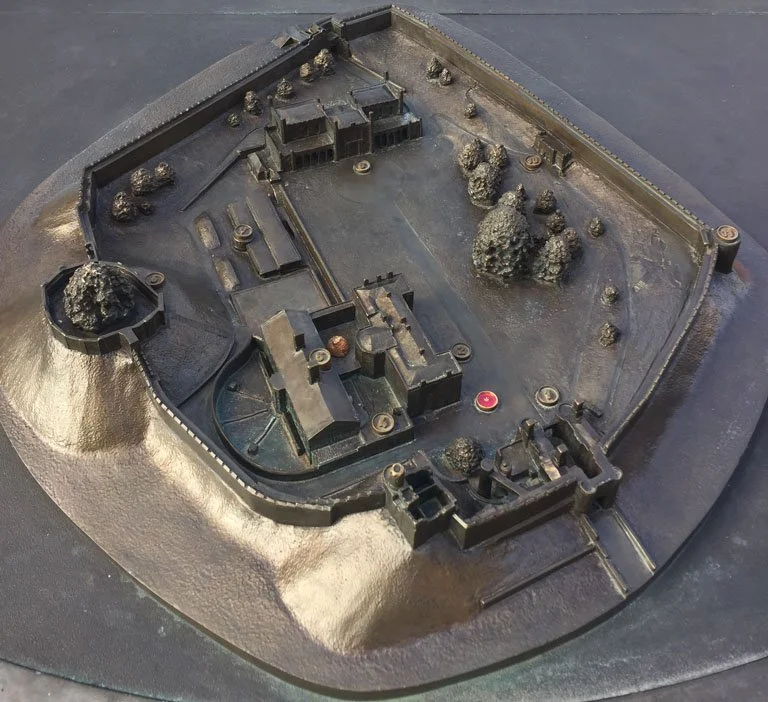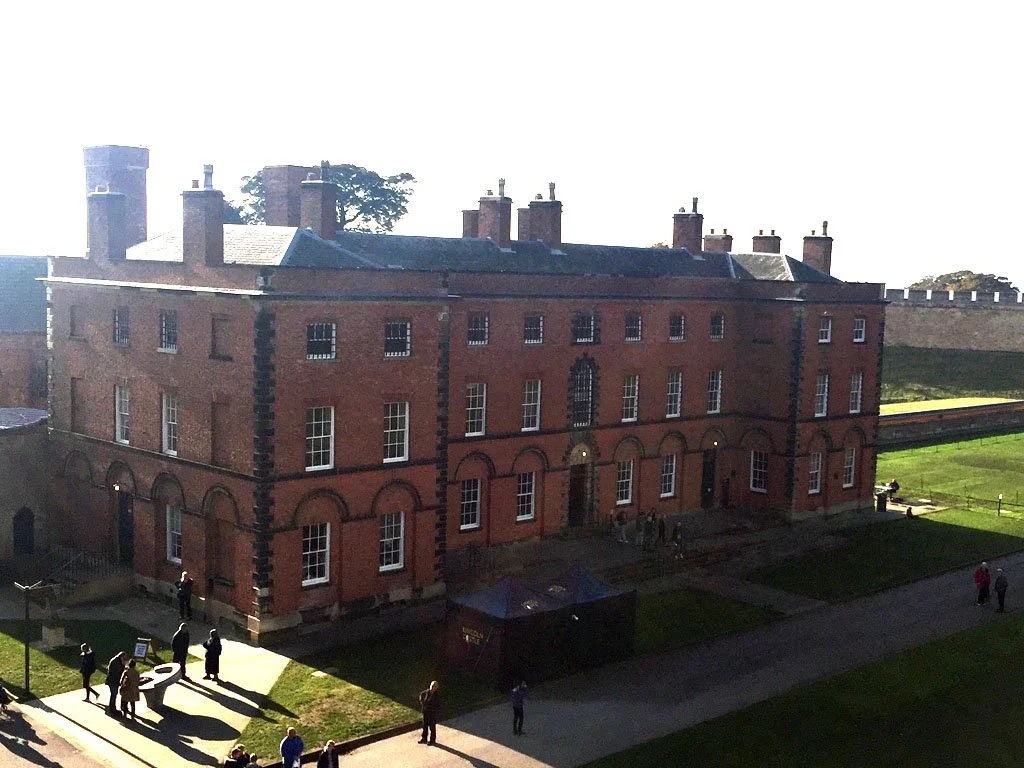Lincoln Castle with two Mottes
Lincoln Castle is a large Norman stronghold built high upon an ancient Roman fort in Lincoln, England. It has two mottes and a large bailey, which is a very rare design, as most motte and bailey castles have just one motte. Lincoln Castle has seen many battles through its time. Royalty, nobility and parliamentarians have all fought to seize control of the castle, with its strategic location in the north, and defensive prowess on top of Castle Hill.
Lincoln Castle the Roman Fortress
Lincoln Castle sits on an old Roman settlement called Lindum. During the reign of Emperor Nero (58-68 AD), the Ninth Legion Hispana built the vast square fort on top of a hill above the River Witham. This location served to protect the great north road (Ermine Street), that linked London to York, via Lincoln. With the River Witham just down the hill, goods could be transported easily too.
The Roman fortress was a large walled settlement, some of which can be seen today. The Newport Arch, for example, was the northern gate to the city, which straddled Ermine street on its route up to York. The arch is still in use today, and is the oldest arch to have traffic passing through it.
Furthermore, the cobbled streets around Castle Hill, which lead up to Lincoln Castle, lie in the centre of the old Lindum, albeit 2-3 metres above the original Roman surface. Further evidence of the Roman settlement can be found on the trail of Roman Lincoln.
Lindum Colonia
By 86 AD, the founding Romans of Lindum had left for other parts of the country, where local uprisings were still persisting. Lindum was left unmanned for years, and by 100 AD it had become a 'colonia', which was a retirement settlement for soldiers. Lindum Colonia, like other colonias, would have been reserved for the Romans retiring from years of service, who did not want to return home.
Lincoln Castle, the Vikings and Saxons
Long after the Romans left, Lincoln became an important trading settlement for the Vikings. Situated deep inside the Danelaw, the Vikings used the local rivers to trade goods to and from Lincoln. The Saxons gradually started settling amongst the Danes, with recent evidence of Saxon burials emerging.
Inside Lincoln Castle, a Saxon stone coffin was excavated, revealing what is thought to be a wealthy Saxon king. Apart from this though, there is little known about Lincoln Castle during the Anglo-Saxon and Viking period.
Lincoln Castle the Norman Stronghold
Lincoln Castle, the stone stronghold you see today, was built on the orders of William the Conqueror in 1068. Quick to subdue England after his victorious battle in Hastings, William set about building castles across the land.
In Lincoln, the most suitable location was directly on top of the south-western corner of the old Roman settlement. With strategic roads, like Ermine Street and Fosse Way providing great access to other major towns, and the River Witham leading out to the Wash and beyond, the location was ideal.
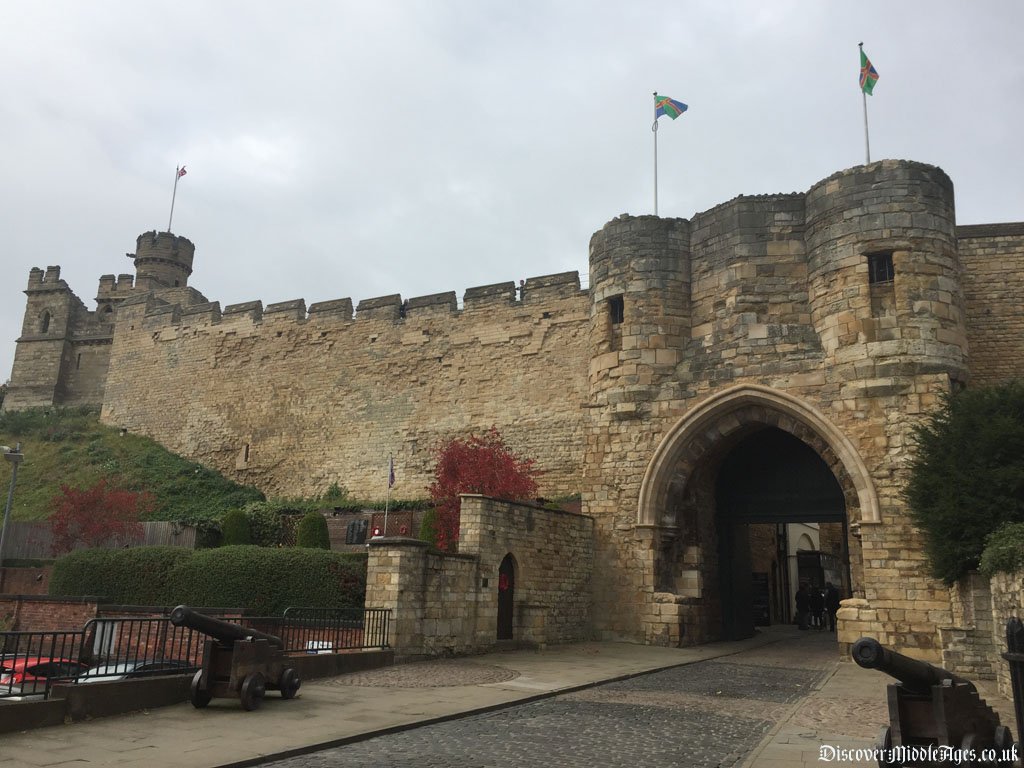
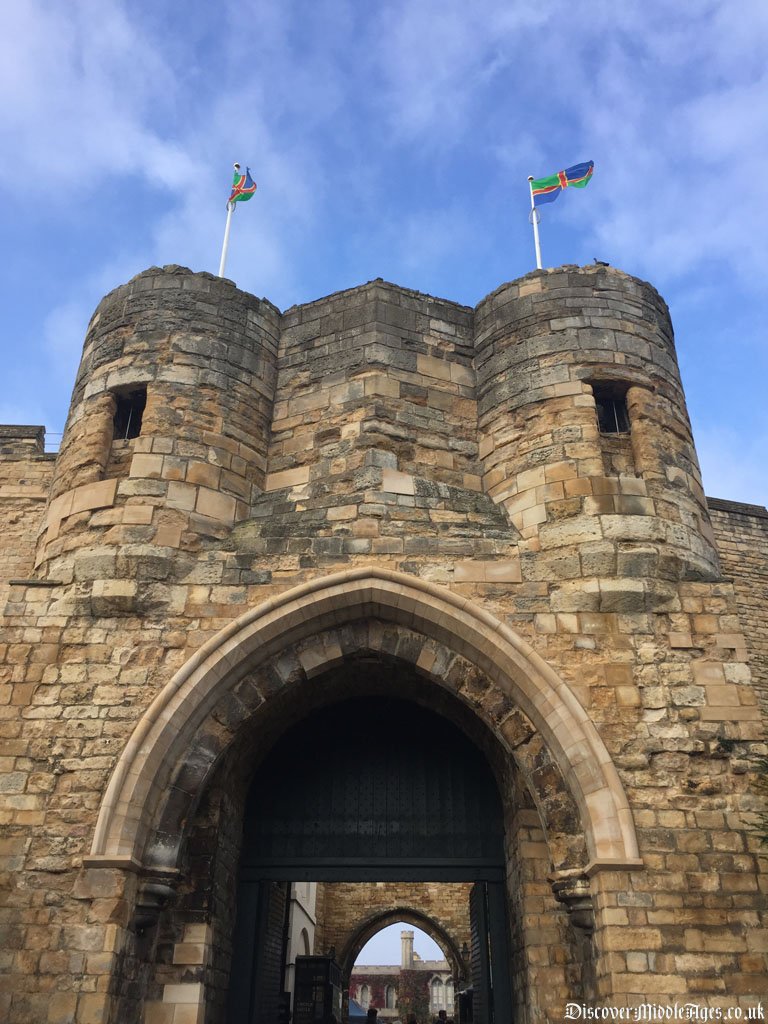
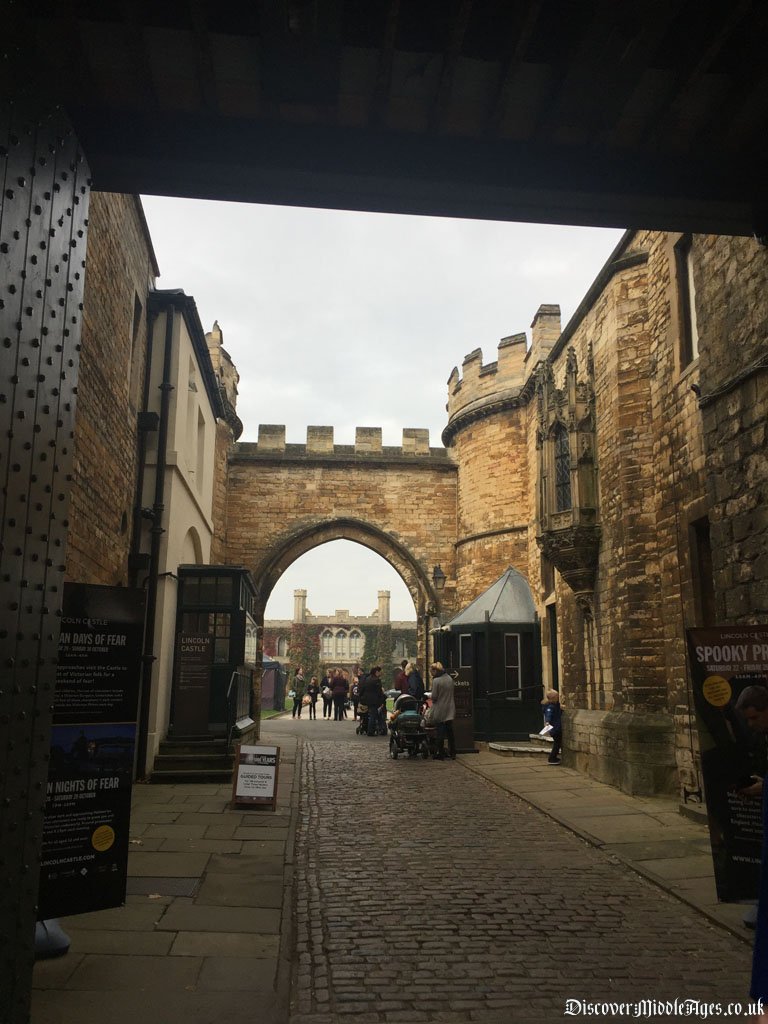
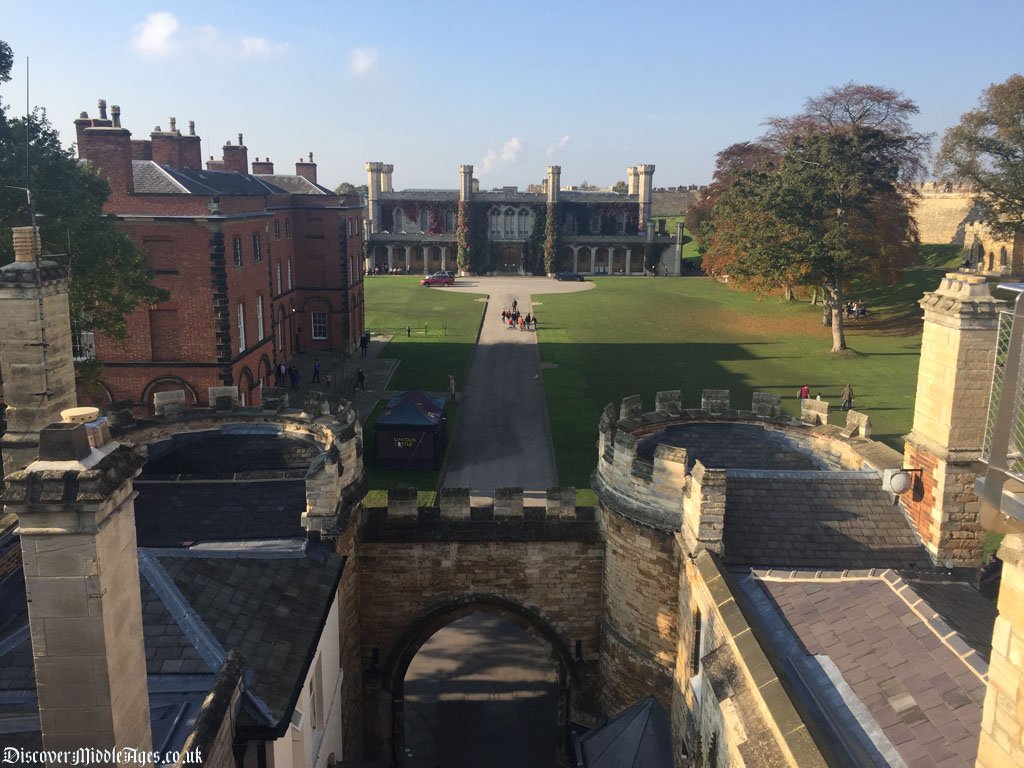
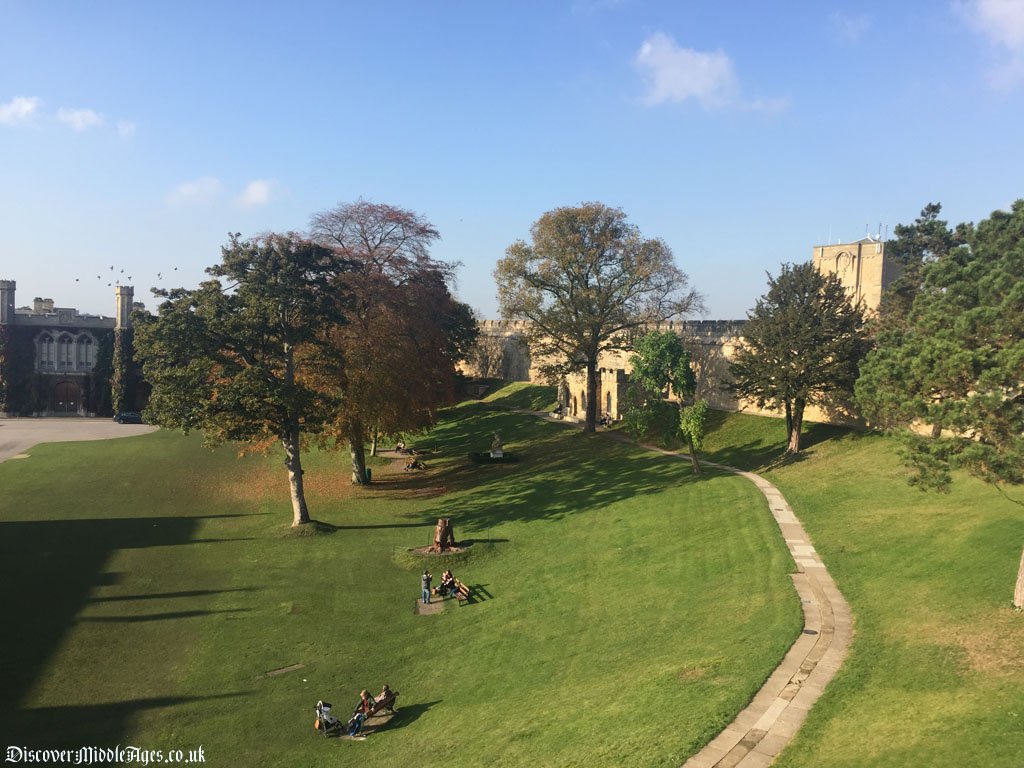
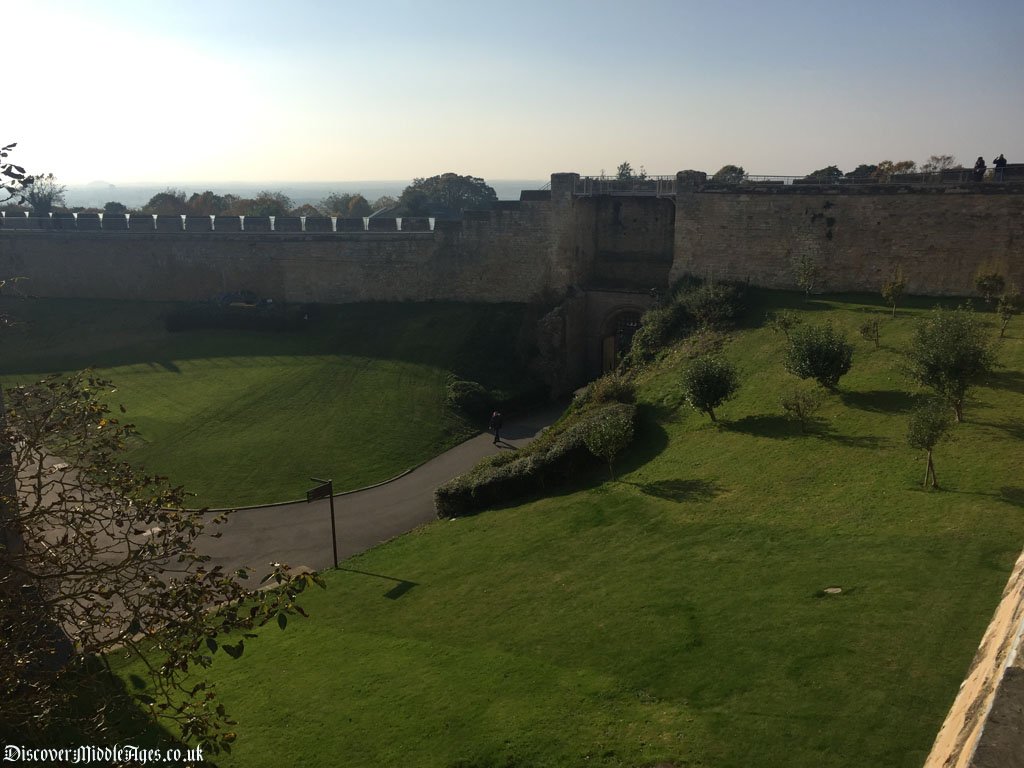
The Norman stone walls surround the castle, and are protected by earthwork ditches on all sides except the south. The walls today allow visitors to walk on them, providing an excellent view of the castle, Lincoln Cathedral and the surrounding city and countryside.
Lincoln Castle is rare. It is one of only two castles in England to have two mottes. The first motte to the south-east of the castle holds the square Observatory tower, which was built in the 11th century.
The second motte to the south-west of the castle holds Lucy's tower, and was built in the 12th century. Lucy's tower was named after Lucy Bolingbroke, the countess of Chester, and was once home to the constable of the castle. Since the Victorian times, the tower has become a shell and burial ground for the criminals who died within the castle.
There are two gates to Lincoln Castle, the main entrance gate is located in the east wall, and the secondary gate in the west wall. Both would have been protected by barbicans, making access very difficult for enemies!
On the north-east corner, a bastion called Cobb Hall was built in the 13th century. It was used as a dungeon and possibly a chapel too. It is here that 38 criminals would be hung high from the top of the tower, for all of Lincoln to see.
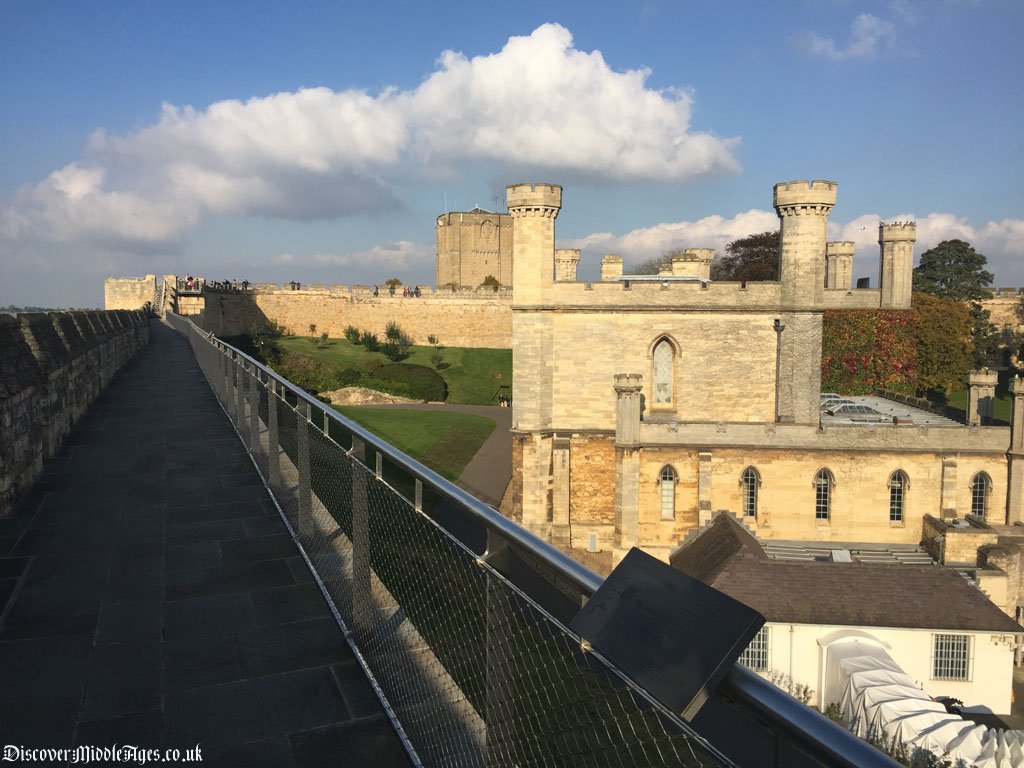

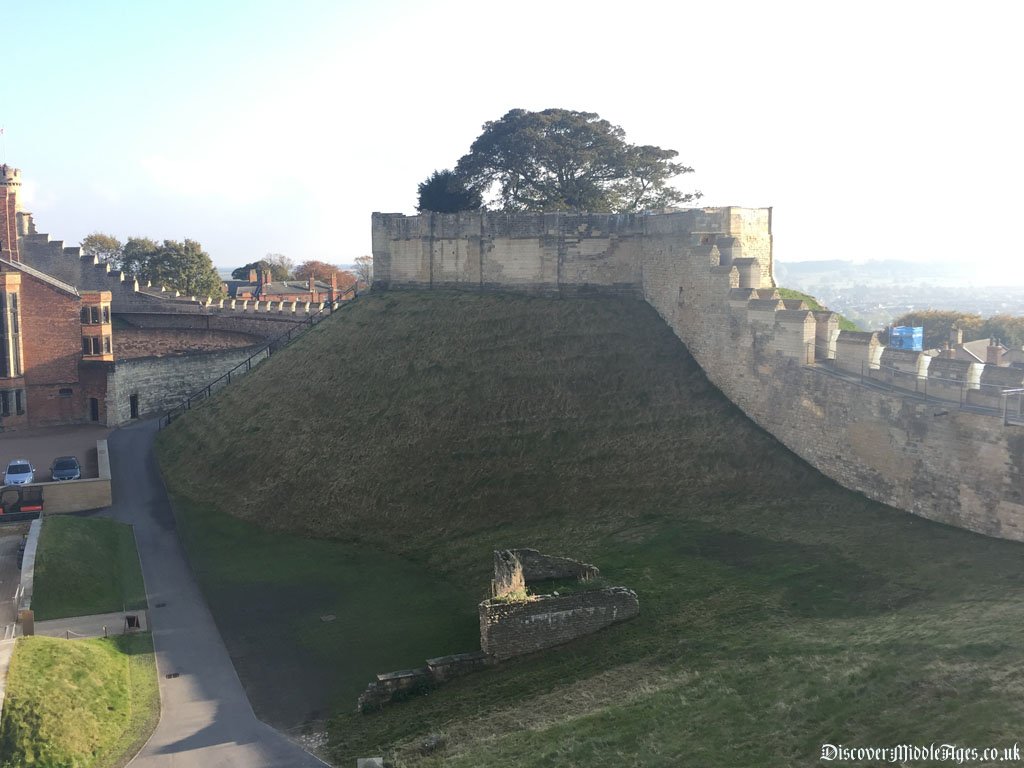
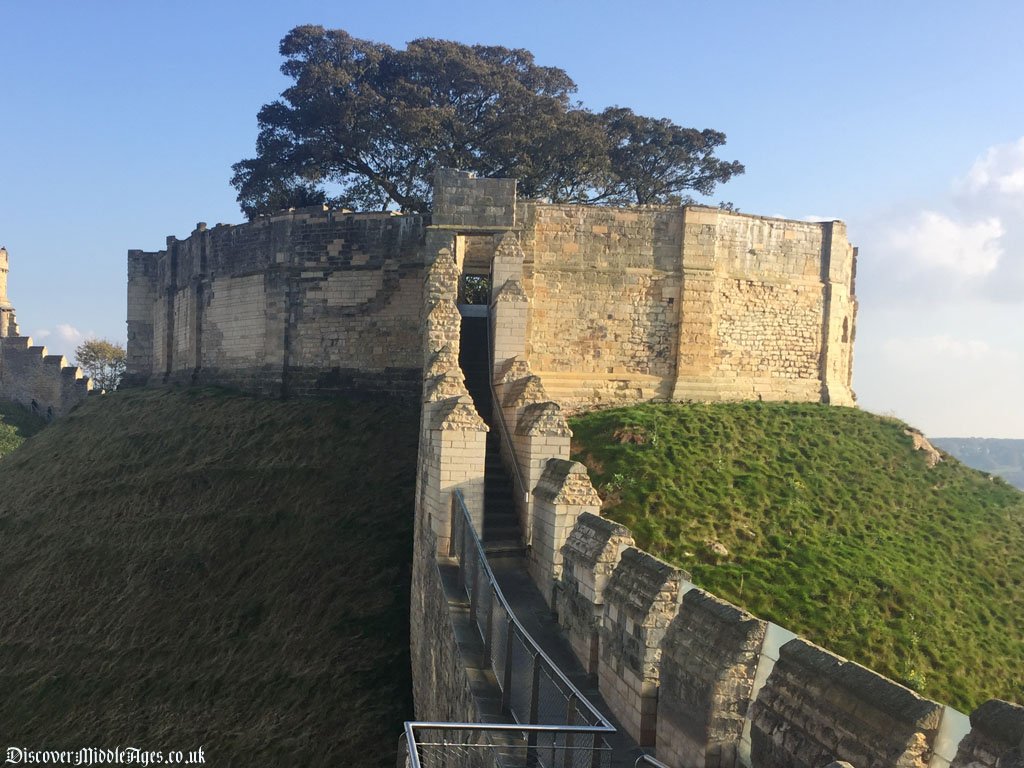
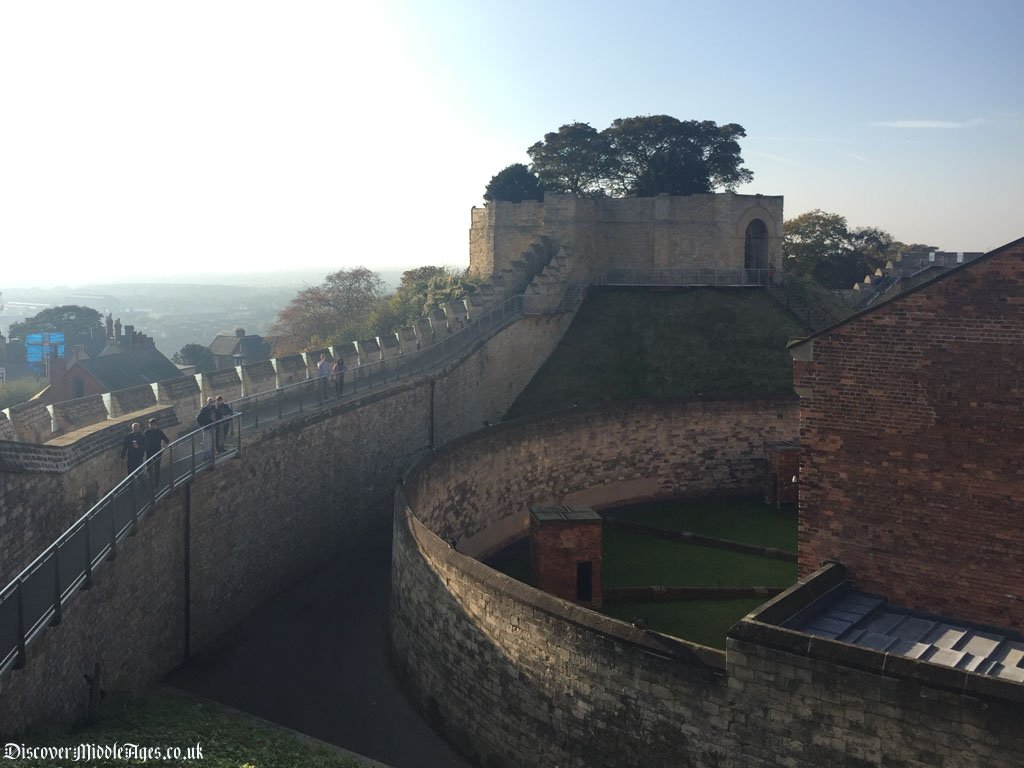
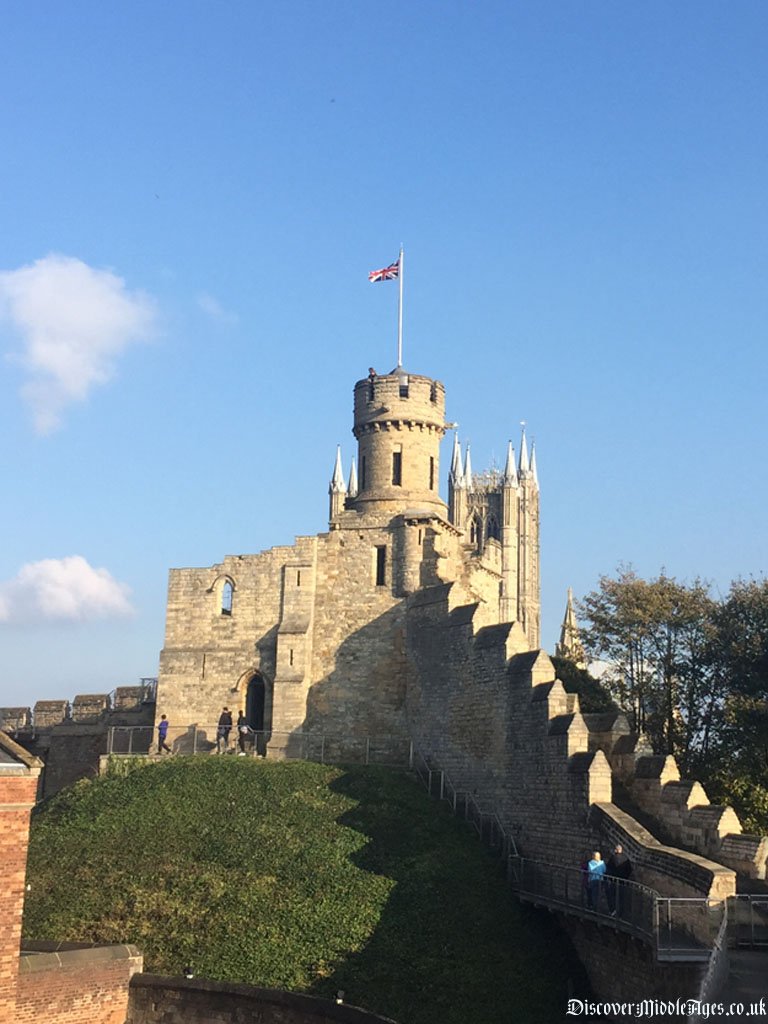
The Battles for Lincoln Castle
Lincoln Castle has had its fair share of battles and sieges. The first of the four sieges was the First Battle of Lincoln in 1141. King Stephen was at war with his cousin Matilda, and was laying seige to Lincoln Castle in an attempt to win it back from Ranulf, Earl of Chester. However, a large force loyal to Empress Matilda relieved the siege and captured King Stephen! The King would spend the next 6 months imprisoned in Bristol Castle, until Matilda alienated London, and support returned for the king.
The next siege came in 1191, when Nicola de la Haye was steward of the castle. While King Richard I was away on Crusade, his younger brother John decided to seize the English crown. Chancellor William Longchamps supported John, and lay siege to Lincoln Castle. For 40 days, Nicola De La Haye and the castle withheld, until a truce was arranged.
Nicola de la Haye defending Lincoln Castle
The third siege took place in 1217, in the Second Battle of Lincoln, which was during the First Baron's War. King John refused to honour the Magna Carta, and rebels allied themselves with Prince Louis of France. Lincoln city was seized by the rebels, but the castle held out. Nicola de la Haye was now constable of Lincoln Castle, and a royalist in favour of King Henry III. The rebels with the French, led by Thomas Count of Perche besieged the castle.
Nicola de la Haye managed to hold out until William Marshall came to her aid. Marshall used crossbowmen to take one of the castle gates. Foot soldiers were then able to storm Perche's siege, and the rebels, though offered to surrender, fought to their death. Marshall and de la Haye were victorious. Marshalls men looted the city of Lincoln, in what is now called the Lincoln Fair, as it was loyal to Prince Louis. The victory was a turning point for the royalists supporting King Henry III.
Lincoln Castle saw it's final siege during the English Civil War, in 1644. Royalists, who were holding the castle, were overwhelmed by a far larger Parliamentarian force within just 30 minutes!
Lincoln Castle and the Magna Carta
Lincoln has been home to one of the four surviving Magna Carta originals since its creation. The Magna Carta is one of the most famous and important documents in the world, and was originally issued by King John and his barons in 1215.
The charter established the principle that the king, and everybody else in the land, was subject to the law. The majority of the charter clauses were created to address a long list of discrepancies caused by King John himself, and his abuse of power.
“No free man shall be arrested, or imprisoned, or deprived of his property, or outlawed, or exiled or in any way destroyed, nor shall we go against him or send against him, unless by legal judgement of his peers, or by the law of the land”
The Great Charter was sent to Lincoln Castle soon after King John had signed it, and was read out at the sheriff's court. The Magna Carta has been safely stored in the Cathedral's treasury ever since, until now.
After a huge renovation within Lincoln Castle, the Magna Carta and the Charter of the Forest from 1225, are now kept on display in a new secure vault under the castle. This is the only place in the world to see both charters together in one place.
Lincoln Castle Prison
Lincoln Castle was used as a prison during the 18th and 19th centuries. In 1787, the prison was built inside the castle, and later extended. The prisoners were kept apart most of the time, including times visiting the chapel, which contained booths for the inmates to pray in isolation.
Fred Horry was the first inmate to hang in the prison, in 1872. The executioner, William Marwood, used the long drop of the noose to break the victim's neck!
The hangings took place high on the tower on Cobb Hall, in the north-east corner of the castle. Crowds would gather in the nearby town square to watch the prisoner's execution.
Visiting Lincoln Castle
Lincoln Castle is run and managed by Lincoln County Council. For details on opening times, facilities and refreshments please visit: https://www.lincolncastle.com/
Address: Lincoln Castle, Castle Square, Lincoln, LN1 3AA
